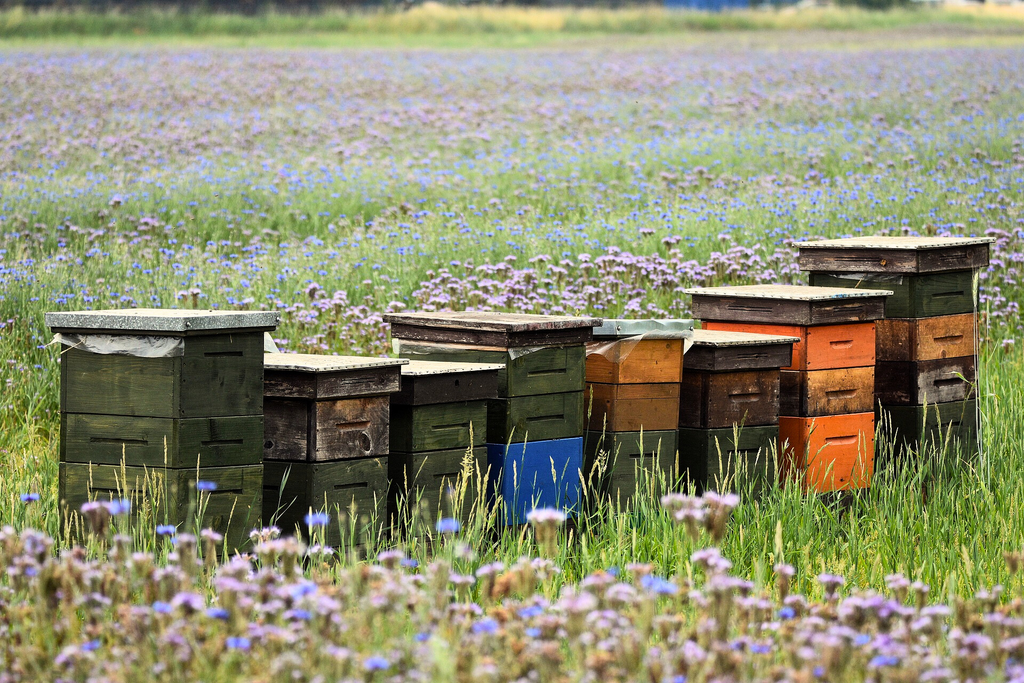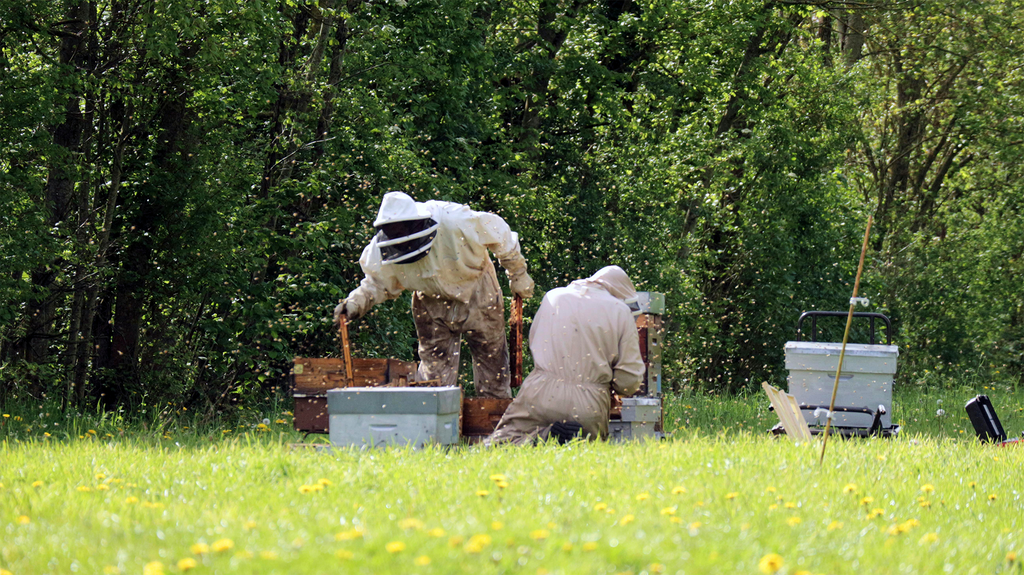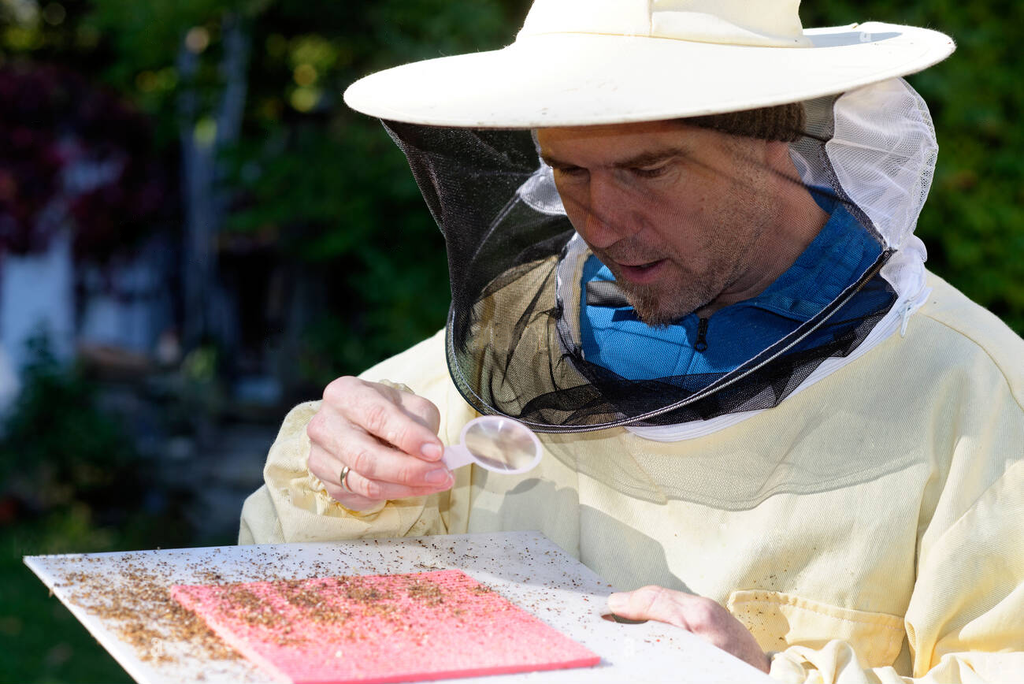Overview of the Honey Flow
During spring or summer, hundreds of flowers burst into bloom. The bees are prepared for the honey production period. The honey flow is a critical period in beekeeping when nectar source is abundant. Bees become active in collecting it to produce honey.
Beekeepers are eager to expect the honey flow period. This means honey production and hive activity will increase.
Importance of Understanding the Honey Flow
Understanding the honey flow can help beekeepers to effectively manage their hives and maximize honey yields.
It helps beekeepers make informed decisions. Find a proper way of hive management practices, such as adding hive supers and conducting hive inspections.

What is the Honey Flow?
Definition and Explanation
Honey flow or nectar flow, refers to the period when blooming flowers provide ample nectar sources for bees. Moreover, the weather conditions are just right for forager bees to collect nectar and convert it into honey.
Factors Influencing the Honey Flow
1. Weather Factors
We all know that nectar comes from flowers. The growth environment of flowers is closely related to climate, temperature, and rainfall patterns. They determine the availability of nectar-producing flowers.
Different regions have varying honey flows, depending on their weather patterns and plant diversity.
Bad weather can also affect the flight activities of bees. For example, there are usually strong winds in spring, which will affect bees' collection of nectar.
2. Floral Sources
The species of flowering plants in an area provide nectar sources of varying quantity and quality. Therefore, each bee spends a different amount of time on different types of flowers. The longer time bees visit a flower, the greater the nectar supply. Generally, some research uses the floral visitation rate by honey bees of some major flowers to evaluate.
Beekeepers often monitor local flora and their blooming cycles. They will consider when the honey flow starts and how long it lasts.
3. Geographical Location
Areas with higher north and south latitudes on the earth have longer daytime hours in summer. Meanwhile, these areas are not too hot or dry. Flowers bloom longer and bees are more active. This creates great benefits for honey production.

When is the Nectar Flow in My Area?
The nectar flow usually begins in early or late spring and reaches its peak before the scorching days of summer begin.
In midsummer, the temperature will get higher and higher, and the honey-gathering activities of bees will decrease. The honey flow period will tend to end. From this point of view, high latitudes do have advantages!
One accurate way to identify when the honey flow period starts is to observe the behavior of the bees. In areas where flowers are in bloom, honey bees fly out in large numbers. When they return to the hive, fully loaded with nectar, back and forth.
Know the local freeze dates to predict when the nectar flow may start. We can determine the first and last frost dates by consulting farmers' almanac or Google search. The last freeze date is a week or two after the nectar flow usually begins.

What Beekeepers Can Do to Increase Honey Production During a Honey Flow?
1. Choose Better Bee Strains
Choose better bee strains to maximize honey production during the nectar flow period. Italian honey bees, German black bees, etc. are bee strains with strong foraging abilities.
As is well known, Italian honey bees can produce both royal jelly and honey. If you prefer one type of production, you can select bee strains that specialize in making royal jelly or honey. This allows for a more focused approach.
If your primary goal is royal jelly production, opt for a high royal jelly-producing strain of honey bees (HRJHB). Conversely, choose a honey-producing strain of honeybees if that is your focus.
2. Raise Forager Bees
After you confirm the start time of the honey flow period, raise forager bees of suitable age in advance. Research indicates that honey bees increase their foraging performance and pollen collection frequency through experience. Experienced foragers are more likely to collect pollen.
3. Apply Supported Colony Management System
Maintaining a high ratio of forager bees during each honey flow period is important. When the ratio of forager bees decreases, the consumption because of brood-rearing tasks will exceed the productivity.
The supported colony management system, based on pairing colonies, sets up a supporter and a producer of bee colonies. Alternate roles as producers and supporters during major nectar flows to increase productivity.
This system can greatly boost honey production and facilitate natural bee swarm and queen bee rearing. The system can theoretically quadruple total honey production from two consecutive nectar flows by strategically reallocating foragers and consumers between colonies.

Advice on Varroa Mite Treatment During Honey Flow
Usually, beekeepers need to thoroughly treat for mites before each nectar flow arrives. To safeguard honey products from pollution, we can not use most of the miticides during honey flows.
However, when honey flow is going on, your bee colonies suffer bee mite infestation. You must apply proper treatment.
If you have to leave honey supers on your hive, please consider applying organic varroa mite treatment. Beekeepers tend to apply soft miticides like thymol, oxalic acid, formic acid, etc. You should pay attention to the temperature restrictions of these products to choose which one to use.
If you choose hard chemicals such as amitraz, fluvalinate, coumaphos, etc., please remove all the honey supers. If conditions permit, during the mite treatment period, you can move the bee frames to a refrigerated warehouse.
If you have to choose harsh chemicals and don't want to remove honey supers, please mark all the bee frames after the treatment. Humans cannot consume this honey because of food safety concerns. Use them exclusively as feed for the dietary needs of honey bees.
After treating bee mites, beekeepers can use probiotic products. In this way, we can help to improve the bees' health and productivity during the honey flow period.
---------------
☛ Click to find more information on varroa mite treatment.





